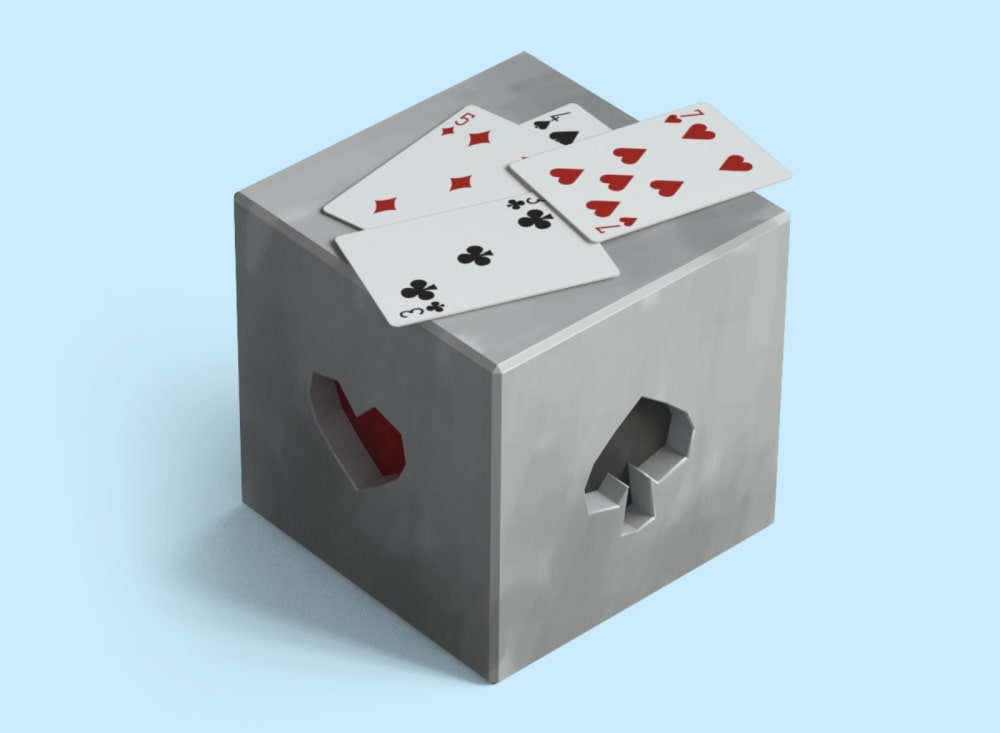
Card Game

Nevertheless, you’ve had neither the time nor the inclination to think about that and you went further. In less than a few minutes you saw something you’d rather not see - a real god damn ghost! Judging by the similarity between the ghost and the portrait of a man hanging in a recently visited room, it’s safe to assume that this is the Lord Escher himself. It has become increasingly clear why none of the treasure hunters returned from the island for so many years. There’s no going back now, so it seems like you’ll have to come to an agreement with him one way or the other.
"Only the one who can tell the truth from a lie will pass!". These were the first words the ghost said, when he saw you. He pointed to a lying on the floor set of double-sided cards which had the numbers written on them. Maybe these cards also belonged to one of the previous visitors of the castle, and then Lord Escher just decided to use them as a tryout for the seekers? Well, it doesn’t matter now. In order to pass you need to determine whether among the several first cards there are the ones that doesn’t belong.
In this mission will be used a special deck of double-sided cards which had the numbers written on them - one number per one side of the card. The numbers on the cards are written according to the following principle: the first card has 0 and 1, the second - 1 and 2, ..., the n-th - (n-1) and n. The cards in this set are shuffled chaotically.
As input your function receives the total number of cards and a list of numbers which have been seen on the alternately taken N cards, noting that you are looking only at the front side of the card. Your task is to determine whether the cards that you’ve seen are a part of this set or the cards from some other deck have accidentally got mixed up. Depending on the answer, return True (if all the viewed cards can be encountered only within one deck) or False (if otherwise).

Input: Deck size, list of the picked cards.
Output: True or False.
Example:
cards(5, [2, 0, 1, 2]) == False cards(10, [9, 9, 6, 6]) == True cards(10, [11]) == False
How it is used: For the game analisys.
Precondition
:
3 <= deck size <= 100
CheckiO Extensions allow you to use local files to solve missions. More info in a blog post.
In order to install CheckiO client you'll need installed Python (version at least 3.8)
Install CheckiO Client first:
pip3 install checkio_client
Configure your tool
checkio --domain=py config --key=
Sync solutions into your local folder
checkio sync
(in beta testing) Launch local server so your browser can use it and sync solution between local file end extension on the fly. (doesn't work for safari)
checkio serv -d
Alternatevly, you can install Chrome extension or FF addon
checkio install-plugin
checkio install-plugin --ff
checkio install-plugin --chromium
Read more here about other functionality that the checkio client provides. Feel free to submit an issue in case of any difficulties.
Welcome to Pair Programming! Engage in real-time collaboration on coding projects by starting a session and sharing the provided unique URL with friends or colleagues. This feature is perfect for joint project development, debugging, or learning new skills together. Simply click 'Start Session' to begin your collaborative coding journey!
You are trying to join a pair programming session that has not started yet.
Please wait for the session creator to join.
It looks like the creator of the pair programming session closed the editor window.
It might happen accidentally, so that you can wait for reconnection.
